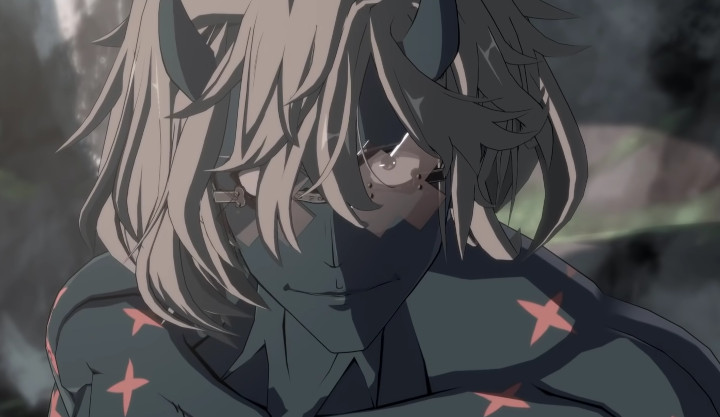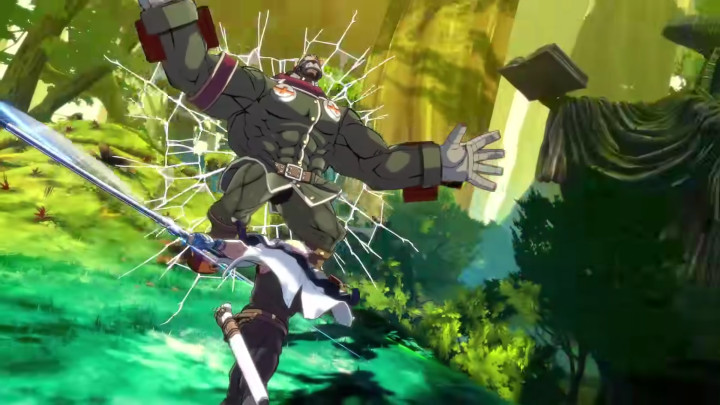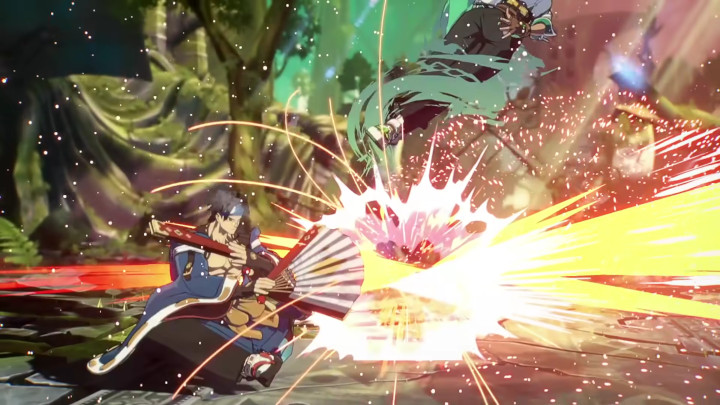
Guilty Gear -Strive- has been out for about a month now, and it’s taken the fighting-game world by storm. Not only is it one of the most quickly adopted games in the Guilty Gear franchise, but it’s also one of quickest-selling fighting games period. Its newly revamped systems have brought more new players to the series than ever before, but these changes have made it a somewhat divisive and controversial title for the hardcore crowd.
Earlier this year, we reached out to the Strive development team to ask them about a few of their design choices. Their answers only came back recently, but this conversation gave us a bit of insight into what the team’s design goals were and how development during the COVID-19 pandemic changed many of them. We also talked about some features that were cut and that will, by the team’s own words, hopefully get implemented via DLC sometime in the future.
Let’s take a look at what creator/director Daisuke Ishiwatari, and the whole team over at Arc System Works had in mind when they were blazing the trail for this new entry in the Guilty Gear series.
(Interviewer’s note: The responses in this interview have been translated from Japanese. The text has been altered slightly to read more naturally in English. In addition, Arc System Works would not mention who specifically answered these questions, just that they came from the development team as a whole.)

You said that you wanted to start fresh with Strive, to create a whole new Guilty Gear experience. How would you say Strive is different from older games in the series? What makes it stand out as its own unique game?
When we designed Guilty Gear Xrd, we largely based it on the previous title in the series, Guilty Gear XX #Reload. Our primary goal back then was to find a way to recreate 2D visuals with 3D graphics. The key concept of our design was to reconstruct the Guilty Gear experience in this new system.
While this was appreciated by many, there were lots of classic systems and methods of play that could not be incorporated into Xrd due to the new graphics system. This made the game feel drastically different to people who had played past Guilty Gear titles and people who were coming in fresh.
For Strive, we forgot about adapting past entries and started from scratch in order to give people new systems to play around with and new ways to express themselves. It should provide a new experience even for those who have played prior games in the series.
Guilty Gear has earned a reputation for being one of the most complex fighting games. Beyond things like tutorial and mission modes, what are you doing to the gameplay itself to welcome new players without alienating older players that prefer a more complex system?
Our first goal was to create an online rating system that would not match advanced players with entry-level players.
After that, we decided to revise the underlying game design so that newer players could experience the core gameplay of Guilty Gear without having to memorize and master a large number of complex systems and techniques. We wanted it to be enjoyable even at a beginner level. That’s why we have shortened combos while increasing their damage, so that high damage output is accessible to lower levels of play. It’s also why we made it possible to guard in the air without faultless defense.
On the other hand, we can’t eliminate the desire for complex and difficult techniques that reward effort from Guilty Gear. That’s why we have created a lot of systems and special moves that have “hidden” uses and properties, and that require a serious amount of control to master.
There are a lot of difficult techniques to learn, but we wanted to limit the degree to which past experience with the series would give you an advantage. Our basic design idea was to create a difficult game where everyone, experienced and inexperienced, started from the same starting line.

Speaking of tutorials, what sets Strive’s tutorials and missions apart from other fighting games? What will the game do to help players learn and improve that other titles aren’t already doing?
This is one of the modes that has undergone major changes from past titles. We wanted to teach people the controls without it feeling like they are being forced to do homework.
Everyone experiences fighting games differently, so we decided that we would make the tutorial adapt to each player. Rather than having them practice the same exercises over and over again, we had the tutorial react to how they played. If the player couldn’t figure out how to approach the opponent, the tutorial would teach them how to dash, but if they already knew how, it would skip that lesson entirely.
Can you talk a little bit about the new characters that have been revealed, Naoriyuki and Giovanna? What were some challenges in developing them and what sets them apart from existing characters on the roster?
Nagoriyuki is a large vampire samurai who has high attack power and reach but low mobility. Using his special moves raises his blood gauge, and when it reaches its limit he will enter blood rage, leaving him exposed. When this happens, his normal moves become very powerful and have drastically increased range but his health drains and he cannot use any of his special moves. He’s designed to be a technical specialist character who thrives within mid-range. He requires a special strategy of his own, one that emphasizes poking and spacing but that has incredible explosive power in the right situation.
On the other hand, Giovanna, a special presidential guard, is a character whose strengths lie in her mobility and her ability to rush the opponent down. Her special moves are simple and easy to use and she doesn’t have many. Even if you’ve never played a fighting game before you should be able to get the hang of them right away.
She has a unique system that builds her attack and defense power as her tension meter builds. We decided on this system so players who struggle with supers and roman cancels will still gain some benefit from building tension. We recommend her for anyone who is new to fighting games, but we also built her to have deep pressure and mix-up game, allowing pros to use her to engage with psychological warfare with their opponents.
In an early trailer, we saw a character come in from the sidelines and attack during a match. Later, you revealed on the official website that characters can interrupt matches in Arcade mode. Can you explain how this works and will this mechanic be used for any additional modes, like say a tag-team mode?
As of release, this gimmick is for arcade mode only. Unfortunately, it is not possible for two human players to cooperate in the same match right now. However, this system will be the basis for updates after launch. We will announce more details eventually, so please look forward to it.
I’m curious about influences. What other fighting games influenced the development of Strive? What media outside of fighting games (books, movies, tv, music, etc.) influenced Strive’s aesthetic?
We can’t mention any properties specifically, but we would like to say that we studied many live-action films and film techniques for expressing how characters move and behave, both in story mode and in the core game.

What were some challenges you encountered while developing Strive during the COVID-19 pandemic? Did work change when we had to social distance? Did any features end up cut due to complications?
Around 70% of the Arc System Works staff had to move to a work-from-home model. Working remotely requires an even more thorough system of management than usual. Our lead staff on the Guilty Gear team are used to working face-to-face with others and hands-on with the project, making this change particularly difficult for them.
This meant we had to unfortunately cut quite a few elements and modes from the game that we originally had planned. We intend to add them all in updates after the game’s release, so expect new content in the coming future.
Can you talk about version differences between the PS4, PS5, and PC? Does the PS5 version load faster using its SSD technology? Will the PC version support controller hot-swapping, and what PC-specific options will it have (graphical or otherwise)?
Although there are some minor differences, such as resolution, there are no major differences in the way the game runs on each platform. However, we would like everyone to experience the shorter load times of the PS5 version. We are also considering implementing a unique mode that takes advantage of the PS5’s specs after launch.
The Steam version, on the other hand, has a variety of graphics options that can be set to support PCs of various specs.
Many games these days are starting to include accessibility options for players with unique challenges like colorblindness, vision or hearing impairment, and other disabilities. Will Guilty Gear -Strive- include any of these options and if so, what are they?
We are considering implementing custom lighting settings that take into account color vision diversity. The hope is to allow colorblind people to differentiate between characters even when controlling the same character. At the beginning of the game we were also considering implementing a comprehensive voice system to help people with other visual impairments. Unfortunately we were not able to implement it for launch, but we are very much looking forward to making it a reality.